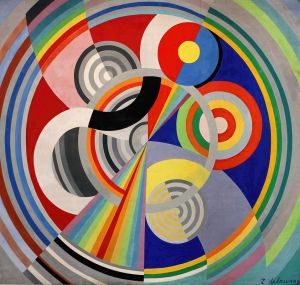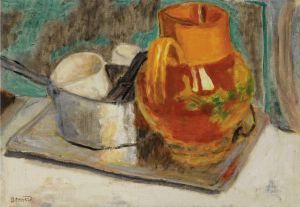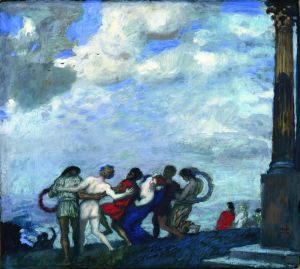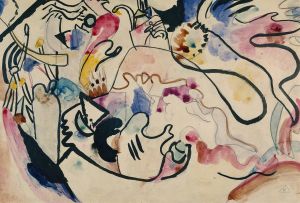
Sängerin
A hand-painted replica of Wassily Kandinsky’s masterpiece Sängerin, meticulously crafted by professional artists to capture the true essence of the original. Each piece is created with museum-quality canvas and rare mineral pigments, carefully painted by experienced artists with delicate brushstrokes and rich, layered colors to perfectly recreate the texture of the original artwork. Unlike machine-printed reproductions, this hand-painted version brings the painting to life, infused with the artist’s emotions and skill in every stroke. Whether for personal collection or home decoration, it instantly elevates the artistic atmosphere of any space.
Wassily Kandinsky's painting "Sängerin" (The Singer) is a notable work from the early 20th century, reflecting the artist's transition from representational art to abstraction. Kandinsky, a Russian painter and art theorist, is often credited as one of the pioneers of abstract art. His work during this period was heavily influenced by his interest in music and its ability to evoke emotions without relying on representational forms.
"Sängerin" was created in 1903, a time when Kandinsky was exploring the expressive potential of color and form. The painting depicts a singer, a subject that allowed Kandinsky to experiment with the interplay of visual and auditory sensations. This interest in synesthesia, the blending of senses, was a recurring theme in Kandinsky's work, as he believed that visual art could evoke the same emotional responses as music.
In "Sängerin," Kandinsky employs a vibrant color palette, using bold and contrasting colors to convey the intensity and emotion of the singer's performance. The composition is dynamic, with swirling lines and shapes that suggest movement and sound. This approach reflects Kandinsky's belief that art should transcend mere representation and capture the spiritual essence of its subject.
The painting is also indicative of Kandinsky's interest in the Symbolist movement, which sought to express the underlying spiritual reality of the world through symbolic imagery. In "Sängerin," the singer can be seen as a symbol of artistic expression and the power of music to communicate beyond words. This aligns with Kandinsky's broader artistic philosophy, which he articulated in his influential book "Concerning the Spiritual in Art," published in 1911. In this text, Kandinsky argued that art should be a spiritual endeavor, capable of conveying profound truths and emotions.
"Sängerin" is part of Kandinsky's early oeuvre, created before his fully abstract works. During this period, he was influenced by various art movements, including Impressionism and Fauvism, which are evident in his use of color and brushwork. However, Kandinsky's unique vision and theoretical insights set him apart from his contemporaries, paving the way for his later development of abstract art.
The painting is housed in the Lenbachhaus, a museum in Munich, Germany, which holds one of the most significant collections of Kandinsky's work. The Lenbachhaus is renowned for its collection of works by the Blue Rider group, an influential circle of artists co-founded by Kandinsky in 1911. This group played a crucial role in the development of modern art, advocating for the integration of spiritual and emotional elements into artistic practice.
"Sängerin" remains an important work in Kandinsky's artistic journey, illustrating his early exploration of themes that would define his later abstract compositions. Through this painting, viewers can trace the evolution of Kandinsky's thought and technique, witnessing the beginnings of a revolutionary approach to art that continues to inspire and influence artists today.
















